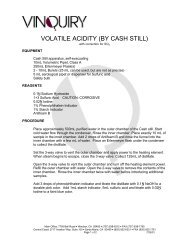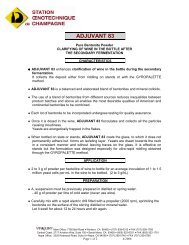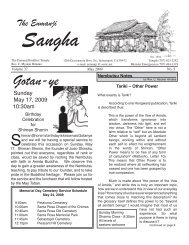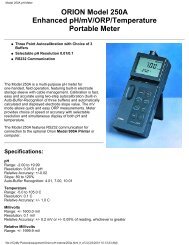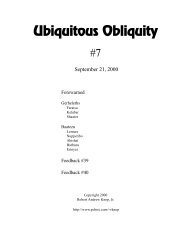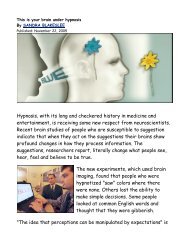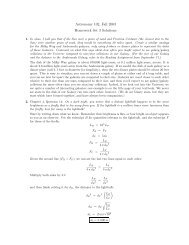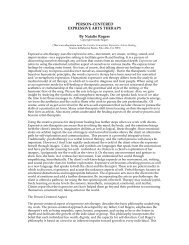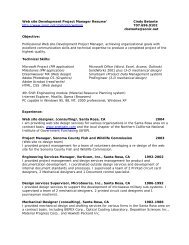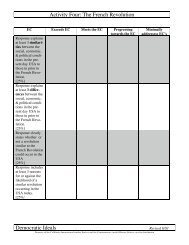DRAFT IEEE Standard for Binary Floating-Point Arithmetic - Sonic.net
DRAFT IEEE Standard for Binary Floating-Point Arithmetic - Sonic.net
DRAFT IEEE Standard for Binary Floating-Point Arithmetic - Sonic.net
Create successful ePaper yourself
Turn your PDF publications into a flip-book with our unique Google optimized e-Paper software.
<strong>DRAFT</strong> <strong>IEEE</strong> <strong>Standard</strong> <strong>for</strong> <strong>Floating</strong>-<strong>Point</strong> <strong>Arithmetic</strong> – 2003 August 12 10:20<br />
width 1 bit 5 bits w bits t = 10 J bits = 3 J digits<br />
field<br />
sign<br />
S<br />
combination<br />
G<br />
exponent<br />
E<br />
trailing significand T<br />
containing J declets<br />
most/least<br />
most...........least<br />
most...least<br />
most...........................least<br />
significant<br />
G 0....................... G 4<br />
E 0........... E w-<br />
F 1......................................... F t<br />
bit<br />
1<br />
d 1.......................................... d 3J<br />
j 1.............................................. j J<br />
The <strong>for</strong>mat's values v are encoded thus according to the value of<br />
the five-bit G field:<br />
1. If G is 11111, then v is a NaN regardless of S. The values of<br />
E and T distinguish various NaNs. If E 0 , the most significant<br />
bit of E, is 1, then the NaN is signaling; otherwise the NaN is<br />
quiet. [The sense of signaling NaN distinction is reversed from<br />
binary; but this allows the all-1 bit pattern to be a decimal<br />
signaling NaN. However, the all-1 bit pattern may not be<br />
propagated; see section 6.2]<br />
2. If G is 11110, then v = (–1) S ∞. The values of E and T are<br />
ignored. However, the canonical infinity representation has E =<br />
0, T = 0; this is the infinity encoding returned as a result by<br />
arithmetic operations. [Last sentence based on suggestion of<br />
MFC in email corresponance after May meeting -JDD]<br />
3. For finite numerical values, v = (–1) S 10 E–bias 10 1–p m ; the<br />
decimal digits d 0 d 1 ...d p−1 of the significand m are encoded in<br />
the combination and trailing significand fields, while the biased<br />
exponent e is encoded in the combination and following<br />
exponent fields:<br />
Copyright © 2003 by the Institute of Electrical and Electronics Engineers, Inc. This document is an unapproved<br />
draft of a proposed <strong>IEEE</strong>-SA <strong>Standard</strong> - USE AT YOUR OWN RISK. See statement on page 1.<br />
Page 25





